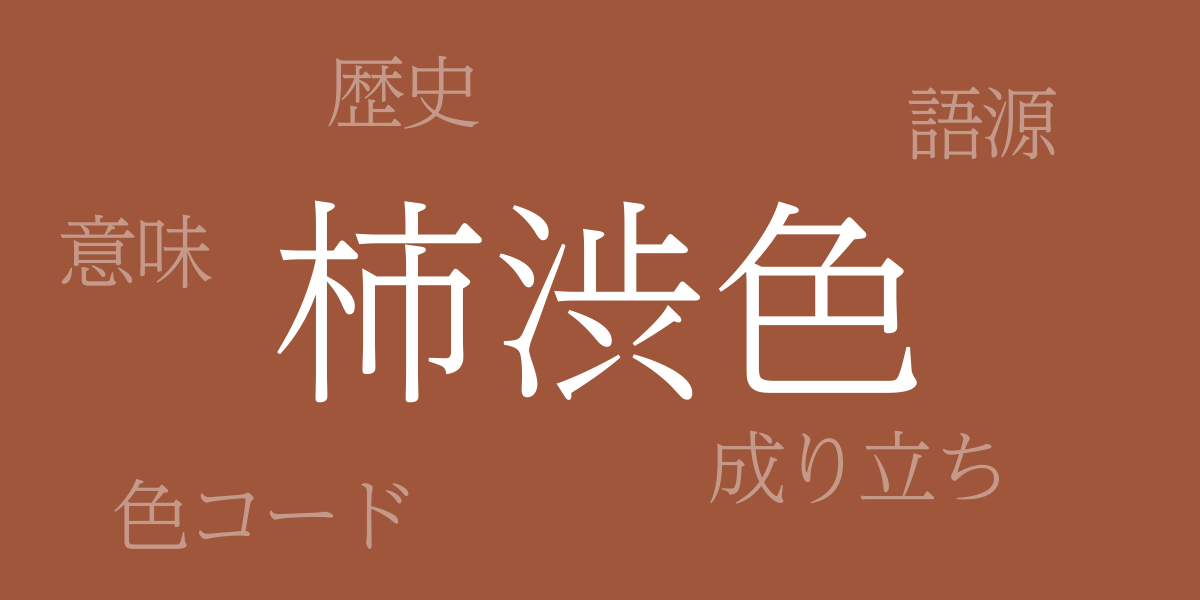Japan’s four seasons are renowned for their vibrant colors, among which “Kakishibu-iro” (柿渋色 – かきしぶいろ) stands out with its unique presence. This profound color, deeply rooted in Japanese culture through history, is extensively used from traditional crafts to modern fashion. This article explores the allure of Kakishibu-iro, delving into the significance of its hue, its history, and its application in design.
About Kakishibu-iro (柿渋色 – かきしぶいろ)
Kakishibu-iro (柿渋色 – かきしぶいろ), as the name suggests, originates from the dye made from persimmon tannin. It is a subdued reddish-brown, reminiscent of the natural colors found in Japanese nature and traditional architecture. This color has been used historically for dyeing clothes, everyday goods, and artworks, embedding itself deeply in the Japanese way of life.
The History of Kakishibu-iro
The use of Kakishibu-iro dates back to ancient Japan. It was already in use during the Nara period for dyeing, and by the Heian period, it was utilized in the garments of the nobility, signifying high status. During the Edo period, as the culture of the townspeople developed, Kakishibu dyeing became widespread among the common people, and the color was increasingly used in many crafts.
Color Code of Kakishibu-iro
To accurately replicate Kakishibu-iro in digital designs and on the web, the following color codes are necessary:
- HEX: #9F563A
- RGB: R:159 G:86 B:58
- CMYK: C:44 M:75 Y:84 K:6
Western Name for Kakishibu-iro
The Western equivalent for Kakishibu-iro includes names such as “Persimmon” and “Ebony Clay.” These names help convey the warmth and depth of Kakishibu-iro in terms that are easily understood internationally.
Conclusion on Kakishibu-iro
As a traditional Japanese color, Kakishibu-iro boasts both beauty and a rich historical background. It is being revalued in various fields such as interior design, fashion, and graphic design. The warmth and tranquility of this color provide comfort and rich emotion to its viewers. Incorporating Kakishibu-iro in your living space or art can bring a breath of Japanese tradition to your surroundings.

























